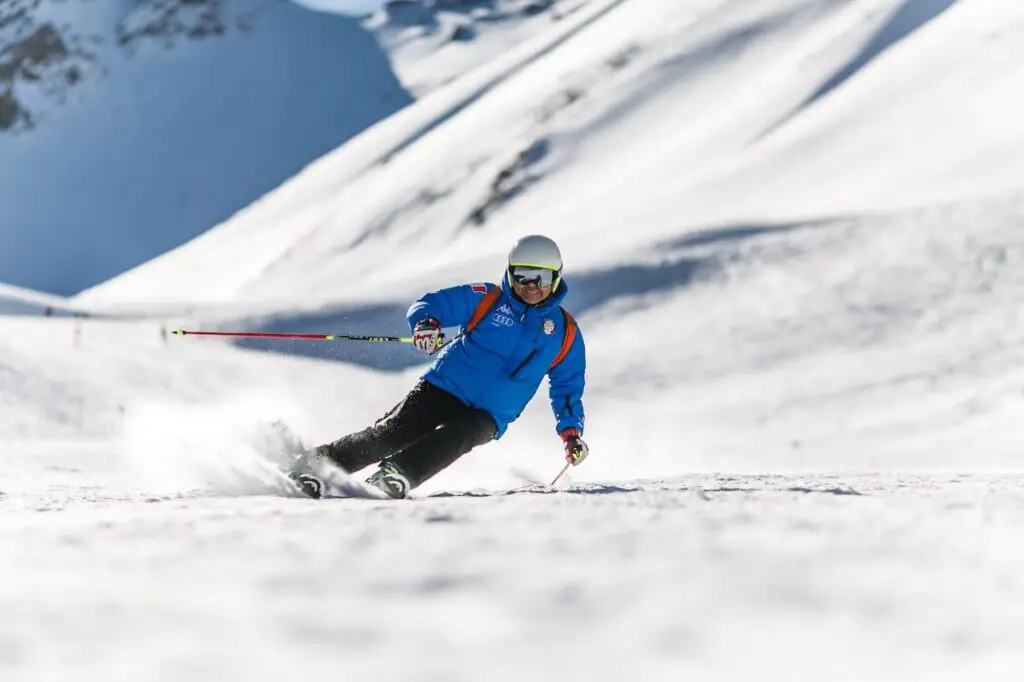When getting involved in sports, whether competitively or recreationally, injury is always a possibility and can be a nightmare for any athlete. Serious injuries require time off from the sport, meaning skill development and conditioning have to be put on hold, often leading to a loss of progress. This begs the question of whether or not it’s okay to return before you are fully healed.
In the case of skiing, a sprained ankle means that any related activity needs to be put aside until you are fully recovered. No matter the level of severity, recovery comes first, although there are ways to prevent such accidents.
If you have an interest in skiing, taking care of your ankles is a priority, regardless of your skill or experience level. Read on to learn how to properly maintain the condition of your ankles and why an ankle injury should prevent you from skiing.
Spraining Your Ankle While Skiing
While skiing, you can sprain your ankle in a number of ways, including:
- Falling
- Cutting while steering
- Being stepped on
These can happen very easily, even to an experienced skier, especially if you are going fast and not practicing caution. Symptoms vary based on the degree of the damage.
- Mild symptoms include bruising and ankle instability
- Severe symptoms include throbbing pain and deformities in the ankle
If you feel any such pain while skiing, it’s better to stop when you can rather than toughing out the pain, as you may worsen your injury, even if it starts out mild. Pain is the body’s way of letting us know that something is not necessarily right with what you’re experiencing. It’s always better to be safe than sorry.
What To Do Next
If you’re eager to get back on the slopes, you may need to put those plans off to the side for a while. If your sprain is truly mild, then it can likely be fixed in a few days by doing the following:
- Rest: put as little weight on your ankle as possible by only walking when you have to and using crutches when you do
- Ice: put a bag of ice on the swollen area with a rag or piece of cloth between the ice and skin, keeping it on for no more than 20 minutes at a time
- Compression: compressing the swollen area will help control the damage
- Elevate: reclining yourself and propping up your foot will help keep the pressure off it while it heals
Once your ankle has healed as a result of following these steps, then you’ll be good to go and get back to skiing. In the meantime, to prevent further harm, don’t even think about skiing. If your sprain is more severe, then you’ll require a more extensive recovery process.
Making A Full Recovery
Along with the medical advice of your doctor, you can do the following while you recover:
- Range of motion exercise: making the alphabet with your toes or moving your knee side to side can keep your ankle moving without placing weight on it
- Stretching: use a towel to stretch your ankle while your leg is straight or stretch your calf while standing
- Strengthening: once you can stand, you can do exercises, such as pushing your foot against a wall to help condition your ankle
- Balance: the final step of recovery involves standing on only your injured foot and testing your control over it. Holding out your arms and closing your eyes makes this exercise harder and more effective.
While doing any of these, be sure to not overwhelm your ankle and avoid any work that can even remotely be considered serious. Of course, this includes skiing, which should not be done under any circumstances until you’ve made a full recovery or have your doctor’s blessing to do so.
Preventing A Sprain
Next time you go out skiing, be sure to protect your ankles with the following steps:
- Fit: for any type of footwear, make sure it’s snug all the way around, or you may twist your ankle while your boot is loose
- Conditioning: along with keeping strong leg muscles in your exercises, stretching your legs and ankles before skiing will make sure they’re spry and ready to take on the challenge
- Listen to your body: whether you feel a sprain or just some mild discomfort, stop skiing. Take a breather, and don’t go out until you’re sure you’re okay.
Final Thoughts
Ankles can be very fragile if misused or bent the wrong way, and it’s critical that you don’t test them when in an injured condition. Skiing on a sprained ankle, even if you feel you can take the pain at the moment, can worsen the injury and potentially permanently damage the ankles you count on being able to use.


